blog
Book Review: Stories of Change – Beyond the ‘Arab Spring’ – World Press Photo
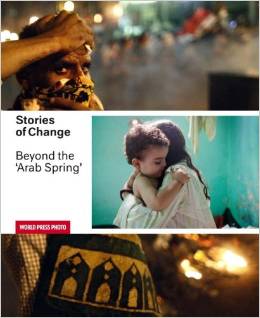
Remember when Hosni Mubarak was ousted from power? The TV reports of Cairo’s Tahrir Square? The time when lots of people in Northern Africa were full of hope that their lives would get better?
Petra Stienen, “an independent advisor in the fields of democracy, diversity and diplomacy” with nine years experience in Egypt and Syria, states in her introduction to Stories of Change: “For many viewers in the West, these uprisings came as a surprise. Somehow the image had sunk in that there was an inherent complacency in North Africa with the status quo of poverty, inequality and oppression. Nothing was further from the truth.”
The ‘Arab Spring’ refers to the first months of the spring of 2011. The pictures in this tome, on the one hand, give testimony to the uprising that then took place, on the other hand, they document aspects of life in Northern Africa that, as the subtitle suggests, go “beyond the ‘Arab Spring'”.
What we get to see in this book are eleven photo-stories as well as five texts that offer, as Petra Stienen states, “an impression of how the revolutions have affected people’s lives, their dreams and their future.” That might be true in regards to the texts yet I’m not so sure whether photos can really do that. When looking at the pics of the uprisings one can – that was at least my experience – sense that something that cannot really be controlled is in the air.
The stories, and photographs, are however not limited to the uprisings. I thought it particularly interesting to be shown pictures of, and told about, people with disabilities who live in difficult and challenging social conditions – for this is not what is usually reported from these parts of the world.
Zied Ben Romdhane, born in Tunisia in 1981, for example, turned his camera on children with XP, Xeroderma Pigmentosum, a genetic disorder that forces the ones affected to avoid sunlight for their skin cells can’t repair damage done by ultraviolet light. And Ahmed Hayman, born in 1987 in Egypt, decided to portray Heba and Somaia, two blind women, as they go about their lives.
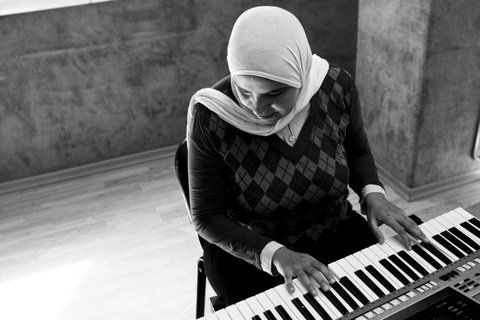
© Ahmed Hayman, for Reporting Change. Seeing Without Looking. Heba has a beautiful, strong singing voice. She plays the piano and is a member of the choir at the Banat Al Noor association.
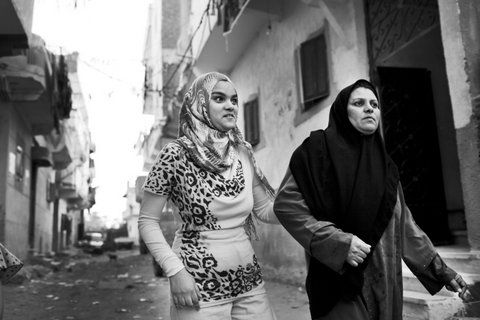
© Ahmed Hayman, for Reporting Change. Seeing Without Looking. Somaia’s mother, who raised her daughter to be independent, says: “I can see, but I can’t read or write. My daughter is considered blind, but she reads and writes in three languages; she uses the computer and the mobile phone. I’m the blind person, she can see with knowledge.”
And then there are the photos by Tunis born Douraïd Souissi whose father hails from the Kerkennah Islands, off the Tunisian coast. These pics are meant to take a stance against bottom trawling that has increased tremendously in post-revolutionary Tunisia and endangers the livelihood of Kerkennain fishermen.
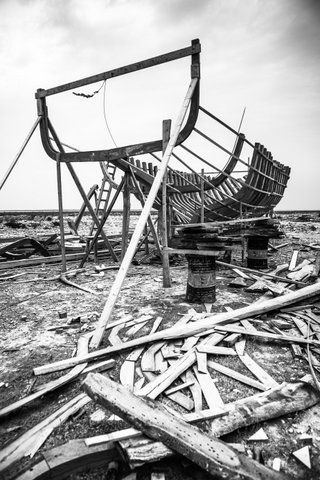
© Douraïd Souissi, for Reporting Change. Fishermen of the Kerkennahs. A new fishing-boat is under construction at the Kraten boatyard. Local fishermen say that the boat is going to be used for bottom trawling, and claim that the owner—a well-known entrepreneur from a nearby village—will not file for a permit, but will still manage to operate.
Whenever we get news from Libya we hear about a country in chaos, we rarely get information about the many daily challenges that people there have to meet. Shahd Attaher, for instance an 11-year-old girl who suffers from Down syndrome. She lives in Tripoli with her parents, brother and sister. Photographer Mohamed Alalem documented aspects of her life. By the way, Shahd is herself a photographer; some of her photographs are shown in “Stories of Change“.
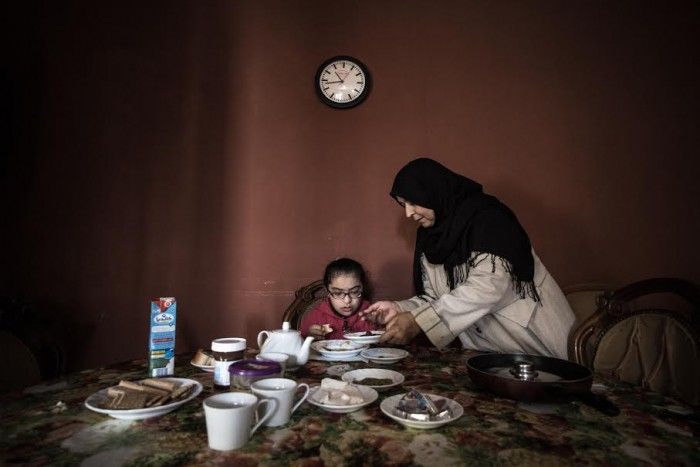
© Mohamed Alalem, for Reporting Change. Shahd. Shahd’s mother serves her breakfast, at home in Tripoli.

Stories of Change – Beyond the ‘Arab Spring’
World Press Photo
Schilt Publishing
For more information and to purchase the book: http://www.schiltpublishing.com/publishing/authors/world-press-photo-stories-of-change/
Location: Online Type: Book Review
Events by Location
Post Categories
Tags
- Abstract
- Alternative process
- Architecture
- Artist Talk
- artistic residency
- Biennial
- Black and White
- Book Fair
- Car culture
- Charity
- Childhood
- Children
- Cities
- Collaboration
- Community
- Cyanotype
- Documentary
- Environment
- Event
- Exhibition
- Faith
- Family
- Fashion
- Festival
- Film Review
- Food
- Friendship
- FStop20th
- Gender
- Gun Culture
- Habitat
- Hom
- home
- journal
- Landscapes
- Lecture
- Love
- Masculinity
- Mental Health
- Migration
- Museums
- Music
- Nature
- Night
- nuclear
- p
- photographic residency
- Photomontage
- Plants
- Podcast
- Portraits
- Prairies
- Religion
- River
- Still Life
- Street Photography
- Tourism
- UFO
- Water
- Zine

Leave a Reply